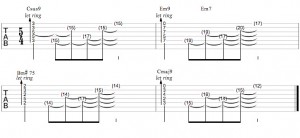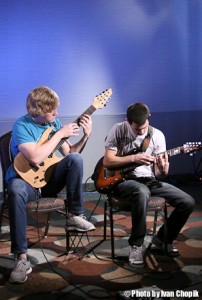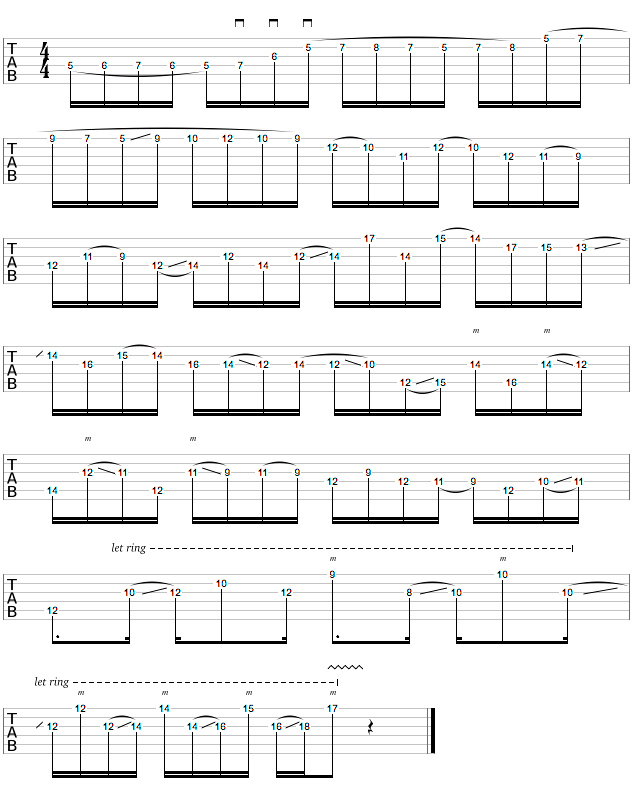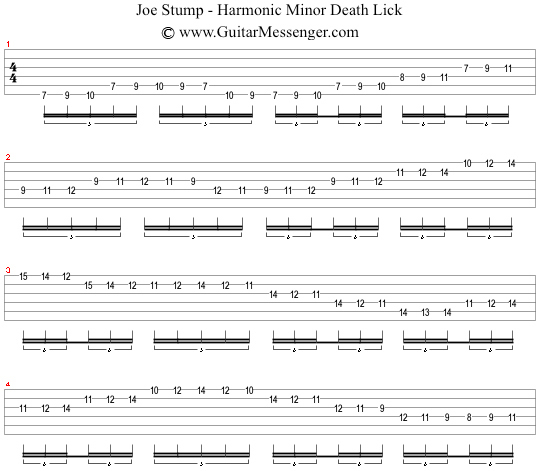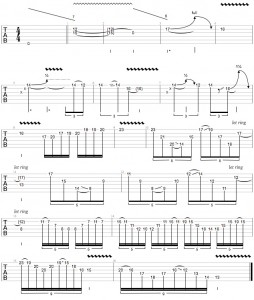[For this lesson Chris is playing his custom Artinger 7-string guitar (ArtingerGuitar.com) in standard tuning low to high: B E A D G B E. Note that the lick he presents does not use the low-B string, so it can also be performed on a 6-string guitar.]
Connecting Sus2 Ideas
I’m going to show you guys a reoccurring sound that we use in Scale The Summit, which is using the suspended 2nd (sus2) chord. It’s basically taking the root, the 5th, and the 9th (which is the second scale degree) and stacking them. This example starts on G on the sixth string, 3rd fret. We’re going to be ascending and descending, moving up in 5ths. When we descend back to the G, we’re going to move up a major third to the 7th fret, ascend and descend. Then we’re gonna move up another major 3rd from the 7th fret to the 11th fret and do the same thing – ascend and descend.
You can use it on any fret across the fingerboard, but just keep in mind that when you get up to the G and the B strings, that you’re gonna have to make finger adjustments from playing the extended version of the 5th.
Left Hand Fingering
When you’re playing the sus2 chord shape going from the root position to the 5th, make sure that you’re using your index and your middle finger instead of the index and ring finger. It’s more proper technique to do it [using the index and ring finger], but the common shape can be extended and if you’re using your ring finger here, it makes the stretch a little bit harder to get. So just remember: index – middle -pinky, and then when you get to this shape [between G and B string], it’s nice to go index – middle – pinky, index – ring – pinky, because the stretch is a little bit wider for the fifth.
Right Hand Picking
When you’re ascending the chord, you’re going to use a down – down – up stroke with the right hand. And when you’re descending the exercise, you’re gonna be using a combination of inside and outside picking. [Check out the tab for the exact picking patterns.]
Rhythm
Lastly, we’ll talk about the rhythm of how I’m playing this. I like to use it in more of a sixteenth note grouping: 1-e-and-a, 2-e-and-a, 3-e-and-a, 4-e-and-a. That way you get more of an uneven structure instead of using triplets, which are commonly found when you do anything that’s three-note-per-string, or just anything that has three notes. You can start with triplets, but what happens is you get into heavily accenting on the ‘one’ every time that you switch to the next shape. It sounds a little better to mix it up with sixteenth notes.
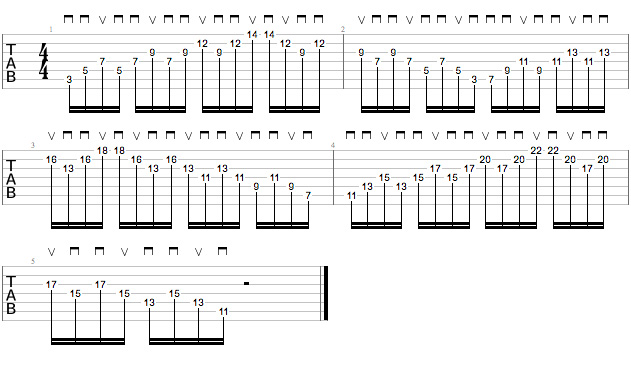
[Special thanks to Devin Kumar for his fantastic video and audio work, Alon Mei-Tal for his spot-on transcriptions, Ian Fleming for lending us his camera gear, and Cigar Masters of Worcester, MA f0r their warm hospitality.]



